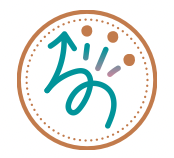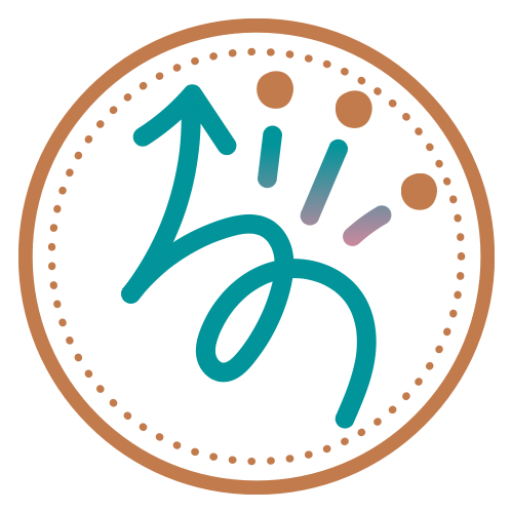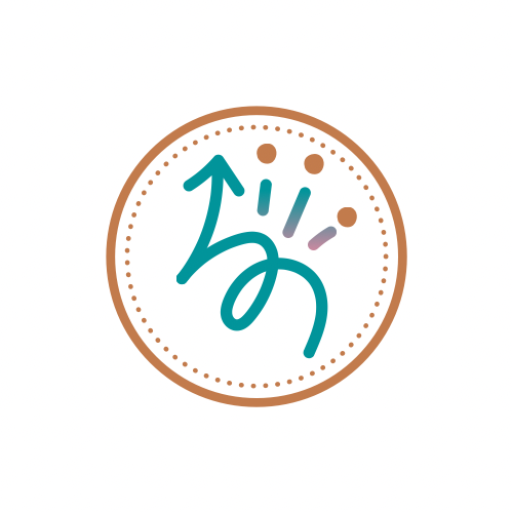Learn how to make your own weighted lap pad using this quick and simple do-it-yourself version. With this simple version, less sewing is required compared to the traditional version. Weighted lap pads are great support for children and adults who have sensory processing differences. The weight of the lap pad provides proprioceptive input while aiming to organize the sensory system, improve attention, decrease anxiety, regulate emotions, and behavior. Weighted lap pads also work well for individuals living with dementia to decrease anxiety and agitation during high stress times. Follow this step-by-step weighted lap pad tutorial for an easier and less time consuming way to create this expensive tool as seen online.

This content is not intended as a substitute for medical advice, diagnosis, or treatment. Always seek the advice of your physician, therapist, or other medical professional regarding a medical condition, or treatment. This content is for informational purposes only. See full disclosure here.
All links in this post are non-affiliate links, and are provided for your convenience.
Weighted Lap Pads: A Sensory Tool
Several years ago, I started a women’s group focused around do-it-yourself projects. Besides laughing, carrying on, and eating a lot of good food together, each monthly meeting we created some sort of project by hand. Our projects ranged from making DIY chapstick and soaps to making an adorable little chicken coop for one of the members. One year, we decided to make weighted lap pads for a local pediatric therapy center for donation. We made 13 lap pads that winter. Poly-pellets ended up scattered on the floor with so many hands working, but it was a lot of fun nonetheless.
Like many projects on The DIY Therapist blog, this project can be donated to pediatric therapy centers, senior care centers, and local schools. Make sure to check out the Projects With A Purpose section of this post. There you’ll find ideas for how to get involved in donating to an organization or school in need. For more diy projects specifically for Projects With A Purpose click here.
What Is A Weighted Lap Pad?
Weighted lap pads are a mini version of a weighted blanket. Both the weighted lap pad and blanket use weight to provide deep pressure and proprioceptive input. Weighted lap pads are known to be a good support tool to help with attention, behavior, anxiety, and regulate emotions, as reported anecdotally.
A weighted lap pad is a type of sensory aid pediatric occupational therapists often use during therapy sessions. Therapists recommend this type of sensory aid for both school and home use. These sensory tools are often recommended for children and adults with sensory processing disorder or differences, ADHD, those wanting more focus, and older adults living with dementia. Individuals who identify as Autistic may also benefit from the use of weighted sensory aids. Weighted lap pads provide support, keep the sensory system organized, and help regulate emotions and anxiety.

Why Make A Weighted Lap Pad?
As a pediatric occupational therapist, I have often recommended weighted sensory tools as a way to provide support during more difficult times of the day.
Weighted lap pads can provide support for:
- School-aged children needing a sensory support
- Have sensory processing disorder or differences
- Children or adults who are sensitive to touch
- Provide support to calm the sensory system
- When feeling overwhelmed or overstimulated by certain situations (ie: appointments, busy environments)
- An increased activity level is seen
- When a child appears to have “shutdown”
- When a child or adult needs a support to help focus attention
- Older adults living with dementia as a way to help decrease agitation and improve unwanted behavior
Furthermore, the deep tactile pressure of the lap pad helps children and adults to regulate their nervous system so they can better concentrate at school, work, or even feel more relaxed during appointments.
Weighted lap pads or blankets can be purchased online at Amazon. You can also find handmade sensory tools on Etsy.

What Materials Are Needed To Make a Weighted Lap Pad?
We will be using a pillowcase for the lap pad structure. No measuring and cutting fabric is needed. The use of a pillowcase is just an easy and less time-consuming way to make a weighted lap pad rather than the traditional way. Use a thick, sturdier pillowcase rather than a pillowcase made of thin fabric. An additional pillowcase is needed to cover the weighted lap pad so that it stays clean, though this is optional.
I recommend using plastic poly-pellets for the weight. Do not use lead fishing weights (contains lead), dried beans, or sand as those are not washable. The poly-pellets are washable and have a nice feel through the fabric. Dried beans may mold if spilled on as well as attract mice and bugs. At this time, I am unaware of a greener, more environmentally friendly alternative to poly-pellets. If you come across a plant-based poly-pellet, please let me know. Comment below or contact me here, and I will update this post. Thank you!
How Much Weight Should a Weighted Lap Pad be?
Weighted lap pads are typically between 2-5 pounds. Typically, a lap pad for children ages 4-10 years old should weigh approximately 2-3 pounds. While lap pads for children and adults ages 10 years plus should weigh 4-5 pounds. Weighted blankets, on the other hand, should not exceed 10% of the individual’s weight.
Nonetheless, even with less weight, weighted lap pads are still beneficial, and can be used across a variety of settings.
Before making a weighted lap pad, try placing heavy blankets, such as quilts, over the individual’s lap to see how the individual responds to the weight. Add a couple books if needed to achieve the desired weight. Some children and adults respond well to the tactile pressure from a weighted blanket or lap pad, while for others you may see a limited response.
* Read below regarding special precautions and contradictions for all types of weighted tools including weighted blankets, weighted lap pads, and weighted stuffed animals.

What Is The Wear-Time Schedule For A Weighted Lap Pad?
Occupational therapists often recommend using a weighted blanket or lap pad during:
- High stress
- Increased anxiety
- High activity level
- When over stimulated
- Fidgeting
- Increased agitation
- When needing a little quiet time to help self-calm
- When a child appears to have “shut down”
Weighted sensory tools are not intended as an all-day use item, an on/off schedule is recommended. A sensory diet may also be recommended by your occupational therapist to further address sensory processing needs. Weighted lap pads are for daytime use only, NOT while sleeping.
Contact your personal occupational therapist for more information.
Evidence Based Research and Weighted Sensory Tools
It is important to note that more evidence based research is needed in this area of occupational therapy. Weighted sensory tools such as weighted blankets and lap pads, weighted stuffed animals, and weighted vests need additional research to support its use although parents and therapists alike report benefits. Weighted sensory tools are still considered experimental and should only be used under the direct supervision of an occupational therapist. Check out this research article regarding the efficacy of weighted blankets published by the American Journal of Occupational Therapy.
Additionally, the OT Potential podcast is a fantastic research-based podcast hosted by Sarah Lyons, OTR/L helping therapists stay up-to-date and apply research-based interventions. The podcast titled “The Evidence Behind Sensory Interventions” provides a wonderful explanation regarding where the field of occupational therapy is regarding sensory research, and why sensory based research is limited. Check out her podcast on Spotify.
Weighted Blankets and Dementia Care
Individuals living with dementia may benefit from the use of a weighted lap pad during the daytime hours to help reduce anxiety and stress, as well as during times of agitation. The weight of the lap pad often feels like a big hug, helps calm the sensory system, and relax. Do NOT use while sleeping.
*Caution: Weighted blankets and lap pads should NOT be used by individuals who have trouble lifting it and cannot remove it easily. If the lap pad causes pain during use, stop use immediately. Weighted tools may not be a good option for someone who is frail or unable to lift it off easily to avoid suffocation or entrapment. Caregiver supervision required. Use only when directed by a physician or occupational therapist.
Other -Sensory-Based Projects You Might Be Interested In:
Caution! Can A Weighted Lap Pad Be Used While Sleeping? And Other Precautions-
Do not use a weighted lap pad or weighted stuffed animals while sleeping due to suffocation and entrapment risks. Weighted lap pads should only be used during the day.
These types of sensory supports should only be used for children over the age of four years who weigh at least 50 pounds to avoid suffocation. Weighted lap pads, animals, and blankets should be lifted easily without difficulty to avoid suffocation or entrapment by the user to ensure safety. Only use one weighted device at a time, and always under adult supervision. If a weighted device causes pain or discomfort, stop use immediately.
Do not cover the face, neck, or head, and do not place in a crib with an infant or young child due to suffocation risks. Contact your therapist for exact weight, wear time recommendations, and to find out if a weighted device is a good fit for you or your loved one. Always check for wear and tear. Poly-pellets are a potential choking hazard.
Contraindications for Weighted Sensory Tools
Weighted lap pads are not recommended for everyone. If you have conditions such as obstructive sleep apnea, asthma, epilepsy, low blood pressure, temperature regulation problems, diabetes, circulation and/or respiratory problems, muscle disorders or are claustrophobic, do not use a weighted blanket or lap pad. Weighted sensory tools are not a good fit in those cases. Consult with your therapist or physician to discuss your case.
* This is not an exhaustive list. Please consult your physician or occupational therapist before use.
Ideas For When To Use A Weighted Lap Pad
Weighted lap pads can be placed across the back, legs, and spread out across the trunk and hip area. Do not place on the head, face, or neck. Weighted lap pads can also be used in a variety of settings including:
- During appointments
- Watching TV
- Riding in the car
- At school, if approved by the teacher
- During transitions from one activity to the next
- Dental or hair appointments
- During meals
- While completing homework
- Playing card or board games
- During activities that may cause heightened anxiety and/or sensory defensiveness
*Do not use a weighted lap pad while sleeping due to suffocation risks. See the Caution section as well as the Contradictions section above.
Projects With A Purpose
Projects With A Purpose is a section of my posts where I lay out ideas for sharing some of The DIY Therapist projects with others. These weighted lap pads, for example, are a great way to help kids or older adults who need a weighted sensory tool, but may not have access to one at home or school.
Things to Consider Before Making and Donating Weighted Lap Pads
Special needs classrooms, pediatric therapy centers, and dementia care centers are all great places to donate these DIY weighted lap pads. Here are a few things to consider before starting this project for others.
- Decide how many weighted lap pads you are willing to make based on cost and time.
- Contact a local school, dementia care center, or pediatric therapy center. Email the teacher, director, or occupational therapist to see what their needs are regarding weighted lap pads.
- Find out the desired weight needed for the weighted lap pads and how many of each weight is needed.
- Make sure to use plastic poly-pellets so that the lap pads are washable. You may need to consider buying poly-pellets in bulk if needed. Include an additional pillowcase to go over the lap pad to help keep it clean although this is optional.
How To Make A Weighted Lap Pad- The Easy Way!!
Materials + Tools

- Sewing machine with thread
- 1- New or used pillowcase. Look for a thicker material that will be sturdier over time. Avoid thin pillowcase material.
- Optional 2nd pillowcase so that you can keep the weighted lap pad covered and clean.
- Sewing stick pins
- Scissors
- 1/3 or 1/4 cup measuring cup depending on the desired weight of the weighted lap pad. See note below.
- A funnel (either store bought or made using paper and tape, see picture above)
- Plastic poly pellets to use as weight. The number of pounds you need is based on the weight needed for the individual. See note below.
- Note: Lap pads made with rice, beans, or sand cannot be washed.
- Note: Do not use fishing weights in your weighted lap pads.
Instructions
Special Notes
Please note, my weighted lap pad weighs 5.2 pounds. I put 1/3 cup of pellets into each compartment. 1/3 cup of poly pellets weighs 1.6 ounces. Adjust the amount of pellets added based on your desired lap pad weight. I did not fill the very last row as I did not want my lap pad to exceed much over 5 pounds. Here is the math so you can adjust accordingly:
- 1.6oz (1/3 cup) poly pellets x 48 squares on the lap pad = 76.8 oz divided by 16 oz per pound = 4.8 pounds of poly-pellets.
*Adjust how much poly pellets you place in each square to make a lighter lap pad. Again, I did not fill the last row so that it doesn’t weigh too much.
Note: Weighted lap pads for children ages 4-10 years should weigh 2-3 pounds. For children and adults ages 10 years plus, weighted lap pads typically weigh 4-5 pounds.




Instructions
- Begin by marking your pillowcase lengthwise by approximately 3.5″ increments as seen in the picture above. Sew straight lines as marked to create tunnels/columns for the poly-pellets. Make sure to back stitch at each end.
- Do not fill the tunnels/columns all the way up. Instead, add approximately 1/3 cup poly pellets across each of the tunnels, filling only the bottom row.
- Secure the pellets in place with stick pins. Slowly sew across the pillowcase as close to the poly pellets as possible, removing the stick pins, and securing the poly-pellets in place. See pictures below.
- Repeat steps 2 and 3 until completed. Reminder, I left the last remaining row empty to not exceed 5 pounds.
*Do NOT sleep with a weighted lap pad. See note above. Daytime use only.



How did this project go? Let me know in the comments below. If you have any questions please let me know. I’m happy to help!
Don’t forget sign up for the DIY Newsletter below. My newsletter includes occupational therapy tips for across the lifespan, new projects, and occupational therapy related news.
Resources
Sensory-Based Intervention Resources
- The OT Potential podcast is a fantastic research-based podcast hosted by Sarah Lyons, OTR/L helping therapists stay up-to-date and apply research-based interventions. The podcast titled “The Evidence Behind Sensory Interventions” provides a wonderful explanation regarding where the field of occupational therapy is regarding sensory research, and why sensory based research is limited. Check out her podcast on Spotify.
- Cara at the Pocket OT provides a nice overview of facts regarding weighted blankets and lap pads. Check it out!
- Read the American Journal of Occupational Therapy’s (AJOT) research article, Weighted Blanket Use: A Systematic Review (2020).
- Weighted therapy guide
Weighted Blankets + Dementia Care
Where To Purchase Weighted Lap Pads and Blankets
- Alzheimer’s Store
- Handmade weighted lap pads on Etsy
- Weighted lap pads on Amazon








